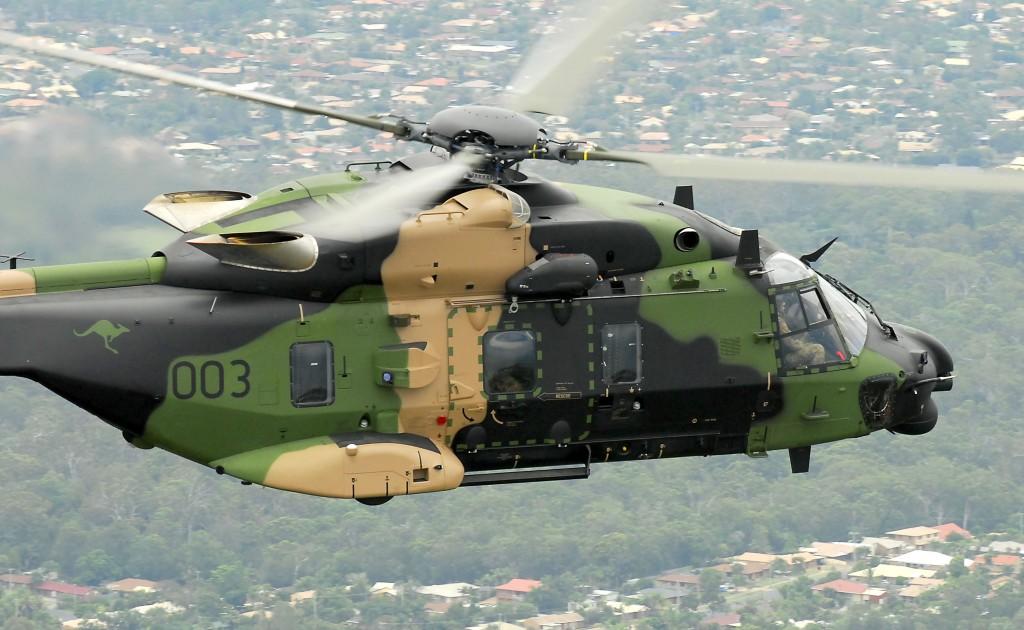 Last week saw the release of the latest Australian National Audit Office report into defence acquisitions. In the firing line this time is the multi-role helicopter program. Like most audit reports, the ANAO has carefully unpacked the process behind this troubled acquisition—now over four years late and, like many other audited projects, well ensconced on the projects of concern list.
Last week saw the release of the latest Australian National Audit Office report into defence acquisitions. In the firing line this time is the multi-role helicopter program. Like most audit reports, the ANAO has carefully unpacked the process behind this troubled acquisition—now over four years late and, like many other audited projects, well ensconced on the projects of concern list.
But unlike most audit reports, there’s a big gap in this one. The ANAO reports that the Howard government’s decision to acquire the European-sourced MRH90 rather than the American S-70M Black Hawk was taken against the advice provided from Defence. Because those deliberations are covered by Cabinet confidentiality, we can’t be sure why that was the case. My suspicion is that the deciding factor was the prospect of greater Australian industry involvement in the European bid.
But even without the missing data there’s plenty of meat in this report. As I’ve written previously, the background is the early 2000s Defence helicopter rationalisation plan. The idea behind the plan was to reduce the number of types of helicopters in the ADF’s inventory in order to reduce the overall cost of ownership. Each new type brings with it a new set of fixed costs and a new supply chain, so rationalisation made good sense. If the Army and Navy could have helicopters with a high degree of commonality and shared supply chains, it’d cut down the overall cost. So far, so good.
Now fast forward to the present day, and we find the Navy is in the process of taking delivery of 24 new Romeo model Seahawk combat helicopters from the United States, while the Army continues to operate its Black Hawks as DMO and the contractor (Australian Aerospace, a subsidiary of Airbus Helicopters) try to get the MRH90s up to speed. Moreover, Army has a strong preference for retaining the Black Hawk for the counter-terrorism role. (That’s long been the case and the audit report notes the same preference as early as 2004.) In other words, despite considerable investment of time and money, little rationalisation has been achieved. Rather than a Seahawk/Black Hawk fleet, or one based on a combination of Airbus land and marine helicopters, we’ll have variants of each for the foreseeable future.
The root cause of the problem seems to have been a combination of government’s willingness to weigh industry involvement highly in its selection criteria and Defence’s inability to provide an accurate picture of the maturity and costs of the respective bids. Defence’s preference for the Black Hawk was based on its assessment that it offered superior battlefield protection and robustness, although the MRH90 was judged to be ahead for amphibious work. But it didn’t manage to put forward a case robust enough to convince the government that the capability differential outweighed other factors. As the ANAO notes:
Defence was not positioned to readily identify areas in need of developmental work for the respective aircraft, and to confidently inform ministers on the respective strengths and weaknesses of the proposals.
That wasn’t the only problem with the submission that went forward to government—the costing data was shaky as well. The proffered costs showed the Black Hawks to be $275 million less expensive to acquire, but with an estimated $10 million per year greater operating cost:
The submission also included estimated support costs, but with low confidence. An additional squadron of MRH90 aircraft was estimated to cost $60 million per annum and a squadron of S-70M aircraft $70 million per annum.
That should’ve been a red flag—the acquisition and support costs for major platforms both tend to be driven by system complexity, and manufacturer claims that through-life costs will be lower for a more expensive machine should be regarded with great suspicion. In this case, the ‘low confidence’ figures weren’t robust enough for sensible decision making (and were almost certainly wrong). Of course, responsibility needs to be shared here; the government took the decision despite the admitted poor quality of the cost data.
In an unusual step, the ANAO doesn’t make any recommendations in this report. Instead it notes (Exec Summary paragraph 51) that Defence has the right management processes in place to do what’s necessary to inform government decision making—it just failed to implement them properly in this instance. Of course, there’s a lot more to this story, and interested readers should read at least the summary of the ANAO report. I’ll let them have the last word:
If there was just one lesson to learn from the history of Defence acquisition projects, it would be the need to be respectful of the inherent risks in these complex transactions and not over-confident that they are under control. … Defence was on the back foot from the start in its ability to confidently offer advice, in not having a sound understanding of the requirements or the estimated costs, and has been endeavouring to recover ever since, with mixed success.
Andrew Davies is senior analyst for defence capability and director of research at ASPI. Image courtesy of Department of Defence.